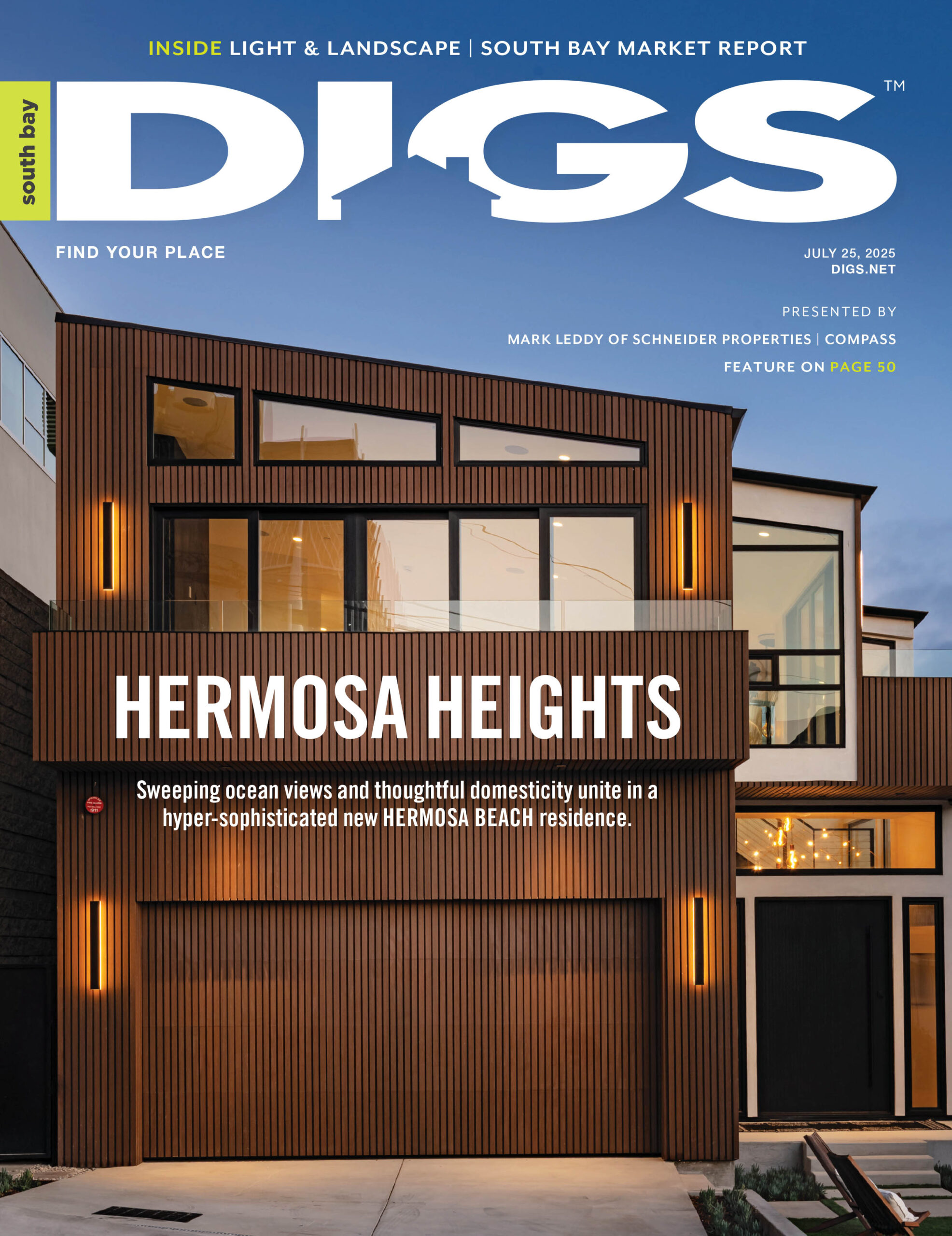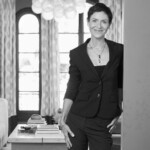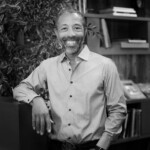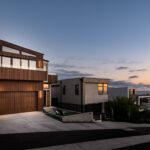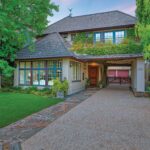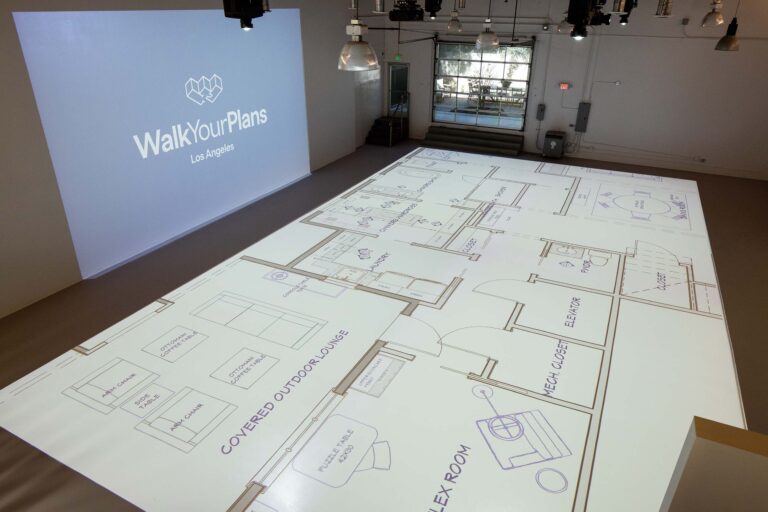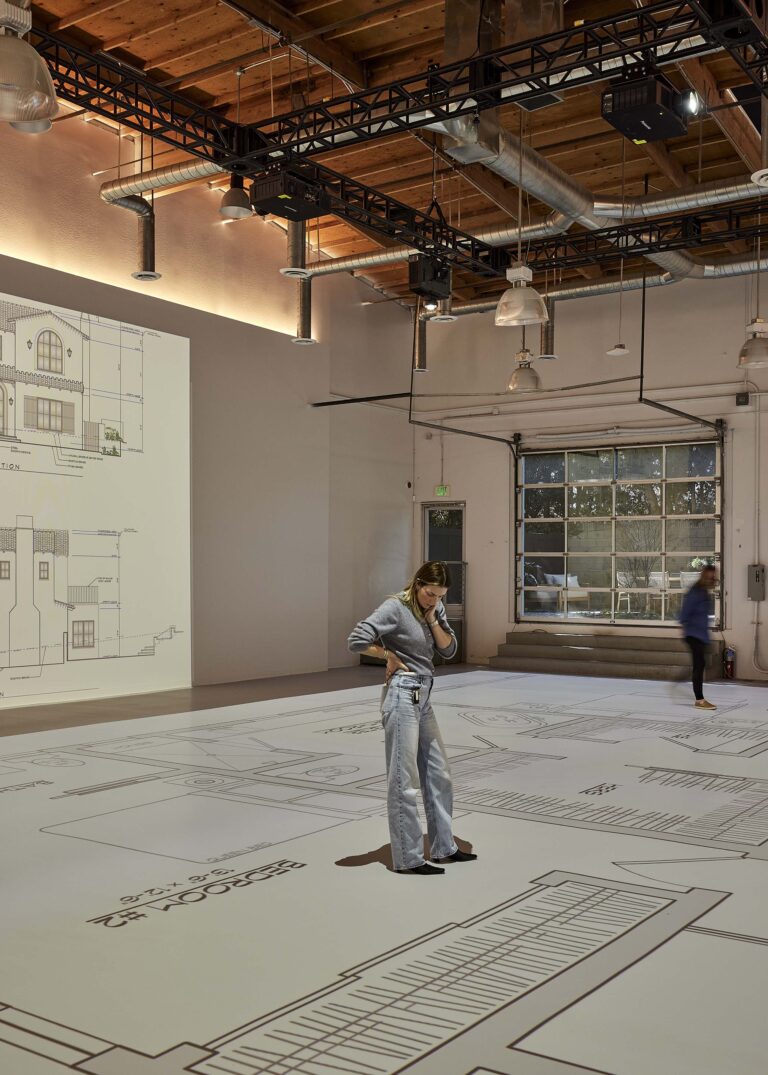Table of Contents
In this Episode
In this episode of Titans of Trade, host Constance Dunn interviews architect Paul McCLean, who shares his journey from a young boy fascinated by architecture to becoming a prominent figure in residential design. Paul McCLean discusses his early inspirations, the allure of Los Angeles for architects, and the influence of modernism on his work. He emphasizes the importance of wellness in design, the role of water and light, and the concept of spatial editing to create peaceful environments. Paul McCLean also reflects on the significance of longevity in architecture, the challenges of restoring historical buildings, and the evolution of his firm in response to market trends.
In this conversation, architect Paul McCLean discusses the evolution of his firm, the significance of generational connections in architecture, and the impact of social media on his success. He reflects on his journey in Los Angeles, the essence of California in his designs, and the importance of sketching in his creative process. Paul McCLean also shares insights on returning to his Irish roots and the unexpected trajectory of his career.
Paul McLean was born and raised in Ireland and graduated with honors in architecture from the Dublin Institute of Technology in 1994. While still a student, he gained practical experience with architectural firms in London, Dublin, and Sydney. He also worked with the Monument Service of Ireland, where he sketched and surveyed historic castles and monasteries across the country. That period also included work on museums and galleries in Dublin.
After relocating to Southern California, Paul McCLean worked at several local firms before founding McCLean Design in 2000. Since then, the firm has grown to become one of the most recognized names in luxury residential architecture, completing projects across the U.S. and internationally.
Despite the firm’s growth and the increasing scale of its projects, the majority of McCLean Design’s work remains in custom homes for individual homeowners. Paul continues to lead the design process personally, integrating his early training with his passion for creating homes that reflect their environment.
Today, McClean Design is based in California and operates globally. The firm has completed dozens of homes—many on hillside or coastal sites that require design review boards, city planning departments, and coastal commissions. Its projects are known for clean lines, indoor-outdoor living, and site-responsive design.
Takeaways
- Paul McCLean’s passion for architecture began in childhood.
- Los Angeles offers unique opportunities for residential design.
- The climate and topography of LA influence architectural choices.
- Wellness and lifestyle are central to modern architectural design.
- Water and light are essential elements in Paul McCLean’s designs.
- Spatial editing helps create peaceful living environments.
- Paul McCLean aims for his designs to have long-term value.
- Restoration of historical buildings requires respect for their origins.
- The 70s were a challenging time for architectural taste.
- Paul McCLean’s firm has evolved to include large-scale projects. 80 to 90% of their work is for homeowners, not developers.
- Working with two generations of a family is incredible.
- Los Angeles has become a significant part of our architectural history.
- Social media, especially Instagram, has changed our visibility.
- Our first book was a best-seller due to California’s allure.
- California’s diverse landscapes inspire our designs.
- We adapt our Californian designs to different climates.
- Success in architecture is about doing what you love.
- Sketching remains a vital part of my design process.
- Returning to Ireland feels like a homecoming.
Sound Bites
- “Water becomes more precious in dry climates.”
- “I hope that our houses are not fashionable.”
- “I want to be respectful of what’s there.”
- “The 70s, the decade where taste took a holiday.”
- “We do now have this very broad range.”
- “We’re very fortunate to have great clients.”
- “It’s like a little virus took off.”
- “We managed to get over that hump.”
- “Instagram was probably the biggest change there.”
- “I don’t know how people design without it.”
Follow Paul McClean
Website: https://www.mccleandesign.com/
Instagram: https://www.instagram.com/mccleandesign/
Full Transcript
Constance (00:02.082)
Welcome to Titans of Trade, I’m your host Constance Dunn, and today we welcome a notable architect whose striking large scale works are found throughout Los Angeles and increasingly around the world. Welcome Paul McCLean.
Paul (00:13.333)
Thank you so much, Constance. Thanks for having me today. I really appreciate it.
Constance (00:17.632)
Yeah, you one of the things I noticed about you I thought was really interesting is you first put out your shingle in Southern California in the year 2000, but you were doing architecture for many years before. And one of the things that was so interesting is at university, you were doing projects. And I thought, okay, maybe he’s doing some projects for the neighbors or whatnot. But then I find you’re in Sydney, you’re working in Ireland and elsewhere. So how did that come about? That’s not the normal.
Paul (00:26.859)
Yes.
Constance (00:46.734)
course of things.
Paul (00:48.267)
Well, there’s always a lot of help, you know? Sorry, I I wanted to be an architect since I was a really little boy, which is kind of interesting because I was known in my family, just came from nowhere, came out of nothing, I don’t know. But early on, I think when I was like four or five, my mom said I was always drawing houses and I was asking like, who’s the person who does that? And she’s like, that’s an architect. I’m like, I want to do that when I grow up.
I think I’ve really got no choice. I think it’s like a vocation. It could have been a priest or an architect, right? One or the other. I, early on, like when I was at school, you know, I back in the Stone Age, there was no internet, and I would just go to the local library and they had just a few books on architecture. But one of them was about Frank Lloyd Wright. And so I was fascinated with Falling Water when I was maybe 10 years old. And I just couldn’t believe that was really a house. It was really…
you know, for me at that stage growing up in suburban Dublin, that was like, that’s a house you could live in something like that. It’s amazing. So definitely that’s what piqued my interest. And I was very fortunate that when I was in high school, my high school was getting an addition and my principal, he knew I wanted to be an architect. So he was like telling the architecture firm that was designing.
the addition, like they didn’t get the job unless they gave me like a part time job. So a lot of people like that helping me. And I always was lucky in that before college, I was already working for architects during college every summer. I’d work for a different architecture firm. And basically, I would just go knock on doors till somebody gave me a job, like, like take out the phone book, rip out the pages with the architects in it and just make a map and
walk from office to office, like in London, same in Sydney, until somebody gave me a job. And that’s kind how I got my experience in between.
Constance (02:45.838)
Wow, such confidence. Uh-huh.
Paul (02:47.9)
I wouldn’t say it was confidence, it was just desperation, I need money.
Constance (02:52.142)
see, that’s great. And the fact that you were doing this at such a young age, because, you know, it’s often said, and I kind of believe this, that the hardest thing is knowing what you want to do. Some people don’t really figure that out, maybe ever or till later, but you knew so young. And so you were able to, you know,
Paul (03:08.276)
I do think that’s the most fortunate thing in my life that way from a work perspective, is I always knew what I wanted to do. And my kids are intensely jealous of that. They’re like, how come you knew? And I’m like, I don’t know, I just did. And I really feel very grateful for that, because I know very few people. My niece, though, funnily enough, she’s 13 almost now, and she is a pianist. And she’s kind of the same thing.
Constance (03:25.591)
Yeah.
Paul (03:37.992)
Since she was a little girl, she’s always wanted to play the piano. And it’s like her joy and what she does every day. And it’s great to see it again. Like she’s going to be a concert pianist. I can see it.
Constance (03:50.101)
Wow, wow. And so Los Angeles made sense to you for a number of reasons, I imagine, and what were some of them to come here?
Paul (03:59.019)
Well, when I was at architecture school in Dublin, I would look at, because my interest was always residential, more than anything else. So I still firmly believe that this is the best place in the world to practice residential design in that it takes a certain number of things to make that work well. First of all, you need clients who have the resources to do it. Obviously that’s number one, but you need,
Constance (04:25.72)
Yeah.
Paul (04:27.816)
If you want to do homes, you have to have the space to do them. if you’re an architect working in Paris, you’re generally doing internal remodels because the infrastructure is there. But in Los Angeles, that’s always evolving. The topography is amazing and the climate’s amazing. So I think people have been attracted to that for well over 100 years now, going all the way back to the beginning of the city.
And so when I was at architecture school in Ireland, I’d be looking at all these amazing houses going on in Los Angeles and there was this blue sky there always in the background as well. You know, so I’d look out my window at the cloudy rainy skies and I was like, blue skies, great architecture. I got to go check that
Constance (05:10.638)
Which ones? And it’s interesting because so many of the kind of founding fathers of modernism ended up working in LA. know, there’s Schindler and Neutra, both from Vienna and even just beyond Los Angeles. It’s just the whole Bauhaus crew in Germany. So many of them, it’s extraordinary how many of them ended up working in the US. And I imagine there’s a certain perspective that being like an outsider’s perspective gives you. And I’m not sure if you’ve ever.
reflected upon that or you’re able to discern what that is because you showed up, you you were here and you started working here. know, your early years, you don’t have a reputation yet. You probably had a really great portfolio for a young architect. And there is probably something you brought like those other modernists who came from different areas of Europe brought. What do you think that is?
Paul (06:01.984)
Well, think that’s a really interesting point. I think obviously when you are an outsider and you come to a place, it’s sometimes easier to see the positives and the negatives of a place. And I think that would apply to anything, anywhere. I mean, people move to different places for different reasons. But I think when you come here as an outsider, obviously the biggest draw of the Los Angeles area,
is the topography and the climate, particularly the climate. And when you come and you arrive in this climate, it’s kind of like when you grow up and like if the sun shines, you almost get a holiday. When you come here, you’re like, wow, we have to make the most of this. And I don’t know if that’s part of that point. I know that those architects you’re talking about, for example, Schindler and Neutra, there was a great emphasis on wellness as well and lifestyle within their work, which I think was
Constance (06:58.542)
Yeah
Paul (07:01.084)
When I read back, it’s like, if you think about back at the beginning of the 20th century, people in East Coast cities that were grimy and dirty because of all the industry, and they would see these crates with oranges, with pictures of mission architecture and sunshine and palm trees on them and dream about like, wow, what must it be like out there and how life could be so different? And I think that’s a huge impact on all of us that come from somewhere else.
And I think, Elinda Gray, like the Laval House, for example, of Noitris, is all about wellness. Like, she wanted a house where she could enjoy the local environment and build on that feeling of wellness that is missing in the East Coast. So I think that’s been an enormous influence on all the architects who have come here over the years.
Constance (07:39.918)
Yeah.
Constance (07:51.072)
It’s amazing you just talked about the Lovell Health House because that’s a fascinating project. I just came across a picture of the, you know how there was a kindergarten in the house and it was a picture of the kindergarten and there was the children. go, imagine being a little one going to school there. Wouldn’t that be extraordinary? Like it would probably be just amazing.
Paul (07:58.793)
Yes, yes.
Paul (08:11.988)
Probably, and probably all the children just thought it was completely normal.
Constance (08:15.264)
Yeah, and there probably would have to be these brilliant, brilliant minds. You know what mean? They probably all, yeah, or not, or not, but.
Paul (08:19.699)
Why not?
Constance (08:23.264)
It’s interesting because here at DIGS, we’ve had the pleasure of interviewing two of Neutra’s sons. There’s Raymond and Dion before he passed. And Raymond heads up the Neutra Institute of Survival Through Design. And Raymond was joined Titans of Trade. And he’s very interested in something his father coined, bio-realism, which was really the physiological impact of design on one’s everyday life, health.
Paul (08:30.08)
Wow. Yeah.
Constance (08:49.858)
the way your mind might work. And just changing this to your work, because I see how a McCLean design house would be conducive to getting your vim and vigor ready to go out in the world and make things happen. So have you reflected upon this point specifically when you design?
Paul (09:11.86)
I think so, yes, because I mean, especially when we live here, think obviously the biggest draw is the climate and we’re all familiar these days with seasonally affected disorders and so on that people suffer from. So we know that climate and sunshine has such an enormous impact on our well-being. And I feel like why would you want to be in a place like this and turn yourself away from nature?
You know, to me, it’s all about just breaking down that barrier between inside and outside and making it as subtle as possible. And we have such a not only is a great climate, but we really don’t suffer from insects either here. So, you know, you have possibilities that you don’t have in other parts of the country or in other places where we as we work around the world, we discover more and more. like we can just make rooms completely outdoors and.
have that feeling that you’re not really indoors, you’re more just living under a shelter, which I think is immensely appealing. And I try as much as possible to make sure that every room in a house has access to light and to the garden. And it doesn’t have to be an amazing view of a cityscape or the ocean. You just need to have some room to maybe look at a tree or look at the sky. And you can do it at any scale, I feel.
Constance (10:36.214)
Yeah, I imagine water and light might be a mantra at your firm. Water and light.
Paul (10:40.874)
They are, yeah, it must be growing up in a cold damp place. No, but I do think it’s interesting that as you look around the world at different places, that in dry climates like our climate or any dry climate around the world, that water becomes more precious and the use of water in architecture goes back thousands of years. And it would be very common, for example,
Constance (10:45.186)
you
Paul (11:09.32)
in the Arabian Peninsula or North Africa 2000 years ago to see homes that from the outside there was nothing visible. But then when you walked inside there would be beautiful courtyards with verdant plants and water and so on. And I think that it’s just something that obviously appeals to people at a very intimate level. And so we like to bring water in wherever we can. But we use water in many different ways. We use it
for reflections as artwork so we can just look at the sky. We use it to refract light deep into space. So one thing that people don’t often realize is when we do basements and we put water in the basement courtyard, it’s to basically to bounce the light like a mirror further into the spaces around it so that they are brighter. We use water for kind of passive cooling because when breezes go over water,
and into space, they bring some of that moisture with them. So it’s a great way of just doing kind of passive cooling. And for us, like working in a kind of mixed environment, urban environment, it’s also something we add to our kind of toolbox for spatial editing, which for me is a big part of what we do and means that we look around and see what are the advantages of where we are and what are the disadvantages. And sometimes, for example, there might be
rooftop or road that you don’t want to see. And we’ll use like a pool of water to stop people from moving to that part of the site and seeing the road or the roof. And we’ll use the sound of water to just to kind of mask a busy road, for example. So water in our projects is like, you know, it’s like a part of our toolbox of basic components we use. you know, we find many ways to work with it.
Constance (13:05.304)
Did you just call it land editing or site editing? Spatial editing, I love that. That’s one of the hallmarks and I would say probably something you’ve been very good at since the beginning. I know it’s hard to talk about oneself in this way sometimes, but.
Paul (13:07.772)
Spatial editing. Yes.
Paul (13:20.286)
It’s more like, think it’s part of what we try and do on a site. I mean, I, I feel very strongly that our lives are too busy today and there’s very many distractions and it’s not necessarily healthy for people. And so the last thing I want to do is design a house that just adds to that level of busyness and complexity. So I’m looking for ways to simplify as much as possible and generate a feeling of peace and.
You know, for me, that’s part of this part of that toolbox is the spatial editing. So, you know, removing things that are distracting as much as possible. Maybe it’s as simple as there’s a power pole and we plant a tree in front of it so you can’t see it. But, you know, how can we maximize the sense of peace and wellness and aspects of the aspect to the view, you know, in a way without compromise? Sometimes we use a building itself to kind of.
place it in somewhere where it just blocks something else so that we kind of get the best optimized the light loss as much as we can.
Constance (14:24.556)
That’s wonderful. You know, going back a little bit, it must have been interesting again when you put your shingle out in the year 2000 because modernism was not so much, you were doing something that was, I think there was a lot of probably Tuscan style and Mediterranean style at that time period, I right? So you were probably doing a lot of talking and trying to explain why about what you were doing or maybe not. I’m curious, what was that like? Because you were doing something that
Paul (14:43.488)
There was, yeah, there was.
Paul (14:53.866)
Well, I think we’ve always like in our office, we always have a limited clientele because a lot of people are, they like those type of homes and we just do contemporary modern homes. That’s all we do. And that’s pretty much all we’ve pretty much ever did, except, you know, in the beginning when I was starting out and I didn’t have any choice and we had to keep the doors open and make money. would do whatever we could to get going. But I was lucky.
unfortunate that I was in Laguna Beach when we started and they had a design review board. So I began my practice by just doing whatever I could in town. And because you needed to get projects approved in front of the board, I would have to do public speaking. that gave me, people would go to the hearings to look for architects. So if they saw someone who was being successful at getting something approved, you sometimes got new clients. So that was…
a great way to start to build a business. But one of the nice things about Laguna as well is that it’s one of the few places in Orange County that isn’t planned. it’s not like Irvine where it’s all a planned community and everything has to have a red roof and stucco walls. People are eclectic and they encourage that in that community. And they also have a lot of views. so views to the ocean and contemporary homes lend themselves to making the most of views.
It gave me an opportunity to do more of what I liked than I might have had the opportunity to do in a different community. And then, of course, as people started to see that, then we began to get work outside the community and so on. And then things just went from there.
Constance (16:35.918)
And I have to ask, because I don’t want to forget, back in Ireland, you had a job for a while, or you were like a surveyor of like historic castles and yeah.
Paul (16:44.448)
I had a summer job, yes, where I was wandering around Ireland on trains and with a bicycle and making drawings and surveys of ancient castles. That was like the best summer job ever.
Constance (16:58.754)
Was there something, since you were studying these up close over and over again, is there something from that vernacular that you’ve perhaps transposed and it’s found in any of your works?
Paul (17:10.302)
Not directly, but I do think there is value in everything that we do. I mean that everybody, not just our farm. I do think that one thing it did tell me was to see the longevity of things. And even though what we do is very contemporary, my hope is that we’re doing it in such a way that we’re creating spaces that are essentially three-dimensional light, with height and views and so on that.
people will appreciate going forward and hopefully some of them will survive for a long time because I think in many ways, that’s a big problem in the world is like the destruction and replacement of buildings is a massive amount of carbon that gets used and contributes to the environment in a negative way. think like that, the building industry is responsible for a very large proportion of CO2 emissions and so on. But a lot of it is to do with replacement and so.
I’m seeing, you know, because I’m up there, some of our homes are getting remodeled now. And it’s great to see that even though the style is changing in terms of the finishes and the materials, and there’s always somewhat of a fashionable element to that. know, at the moment, everything gets covered in travertine. Like in five years, maybe it’ll be something else. But it’s great to see that the spaces themselves are surviving and having this new life. It’s kind of like…
Constance (18:18.892)
Yeah.
Constance (18:27.788)
Yeah.
Paul (18:36.562)
seeing a lady with a nice new dress on, I guess.
Constance (18:41.101)
that’s a good point. So, so longevity is something which is great because so, you know, if you’re thinking contemporary of the moment and then there’s longevity in there as well.
Paul (18:51.604)
I think that’s interesting about, I hope, and of course it’s kind of facetious to say it in a way even, but I hope that our houses are not fashionable in the sense that we hope that we’re able to distill things down to something that has long-term value to people. And to me, if something is about space and light and connection to nature and surroundings,
Constance (19:07.406)
Mm-hmm.
Paul (19:19.614)
that intrinsically has long term value. And for me, one lesson I learned growing up in Ireland was that so many of the 18th century, 17th, 18th century houses are held in such high esteem today. And the reason is because of the scale of the spaces and the light that they have, the size of the windows, the height of the rooms.
Constance (19:22.68)
Right.
Paul (19:47.739)
And that just never goes out of style because there’s value in it. And then you see, unfortunately, some of the newer buildings get thrown up, you know, fast by developers. So they have like eight foot ceilings and poor lighting. know, then you’re like, gosh, we’re stuck with those buildings, unfortunately. But that’s the type of thing that, you know, you don’t want to do, hopefully. that because that’s the type of thing that may not survive as we go forward. But I’m heartened by buildings.
that I’ve seen. I was in a house a couple of Christmases ago for New Year’s party in Dublin, Fitzwilliam Square, that someone had just renovated yet again. know, it’s 300 years old and it has brand new kitchens and brand new bathrooms. And, you know, it’s fabulous and everyone’s having a great time. You’re like, this house, you know, has a history and it has a future. And that was one of the things that we had the opportunity to do a project in San Francisco that I was so proud of.
It was a house on Vallejo Street in Pack Heights, and it was from 1903. So it predated the earthquake, had survived the earthquake and the fires, didn’t quite survive the army and Navy after the Second World War and the GIs came back. They kind of chopped it up into little tiny apartments and many of the original features were lost in the interior. But we were able to completely restore the exterior and
We even put a garage underneath it, which was very scary because I kept thinking about those earthquakes and this whole house was held up on these little tiny poles while we put this garage underneath. But in the end, we were able to take this beautiful old home, give it new life and make it work. We were able to put an elevator in, able to put a garage in. So it worked for modern living because it’s a six story structure from top to bottom. you know, if people are going to live in it with families.
Constance (21:22.03)
you
Paul (21:40.65)
children and people, know, with older people perhaps, they need an elevator for that many stairs. And so now we’ve kind of set it on its way, I hope, for another hundred years, you know, and maybe someone else will come along and fix her up again in a while and then keep her going.
Constance (21:55.98)
Yeah. And that is that a white Beaux-Arts originally and a man Nick Dunn was the architect I think maybe. Okay. Okay. And that’s such an interesting and we do post production on this. We’ll put pictures of it, you know, and we’ll put pictures up so people can view this. So what I thought was so interesting because this is fascinating the way that you were able to bring it to modern times, but you didn’t, you were faithful to its original.
Paul (22:00.927)
Yes.
Yes, I think so, yeah.
Constance (22:25.42)
It does not look discordant in any way. There’s a nice marriage there. The union’s really nice. And that must have been very difficult to do, to be faithful to its roots.
Paul (22:38.24)
Well, I think it’s about being perhaps a little humble or modest. And I’m not a fan, frankly, putting contemporary, you know, boxy additions on traditional homes. I have done in my previous Laguna Beach career, you know, over the years, I’ve got involved in a couple of historic projects and one where an old client of mine came and said, hey, I bought this building that had been
remodeled in the 1970s. And it was like a carpet store and they’d put this really awful front on it. And as we kind of crept around in there and kind of started to demolish things, we discovered this amazing kind of Art Deco 1930s building that had been kind of, I don’t know how to describe it, was almost like something had been attached to it. And I guess originally it was a bank. And I
When I worked with my client, Jeff, it’s like he wanted to turn into restaurant. And I was like, we’ve just got to, all we got to do is subtract everything and then restore. And I remember, cause I used to go to design review all the time and city council going on. Some people there were kind of my nemesis cause of all, they didn’t like my contemporary work. And the mayor at the time was like, I can’t believe this is you doing this. I’m like, yes, but I, there’s intrinsic value in what’s there.
And I want it to be respect. I want to be respectful of what’s there. And I want to, to bring it back to life. And I don’t want anyone to walk along the street and look at the way I looked at the carpet store and said, God almighty, what’s that? You know, like I want to look and see this beautiful building. That’s part of the heritage of the town and just look at it go how pretty it is, but not necessarily, it’s not trying to tell a story about now it’s, it’s being honest to what it was.
Constance (24:19.874)
Right.
Constance (24:33.944)
That’s wonderful. So you were able to find there was an Art Deco shell back there and then.
Paul (24:38.718)
It’s almost like there was an Art Deco building and they built this kind of 70s structure over the top of it. And when we, when we demolished the 70s structure, it was kind of still standing there, the original building. So if you went into the showroom and you walked back about 20 feet, you would find the original walls and you’d find the original bank vault and stuff like that from, you know, the 1930s. And, and we just took that and looked for similar windows that you would.
Constance (24:43.714)
Yeah
Paul (25:05.984)
you use in the 1930s and then did in-kind replacements and so on. And, uh, you know, I was able to sell it to the client as well, because, you know, because in the mills act, can, if you his, you restore something historic and then put it on historical register, you can, um, get a lot of reductions in your property taxes and stuff, which is a great, great thing to have. And so, so I guess I’m trying to say like, everything is off its time and you need to appreciate.
the best things of each period and maybe not try and mishmash them together. That’s just my own opinion.
Constance (25:40.308)
That’s an interesting perspective. Whenever you hear there was a remodel done in the 70s, it’s always like, whatever you see that, like, uh-oh.
Paul (25:47.936)
We like to say the 70s, the decade where taste took a holiday.
Constance (25:53.534)
Exactly. A long holiday. And yeah, it’s kind of like, I think, I think it was a from a book, they were describing an old house that needed to be refreshed. And said it was a beautiful woman with dirt on her face or something. You know, they were describing it. And they needed to take it off the dirt. Exactly. I have the feeling that
Paul (26:08.544)
That’s a great way to party. Yeah, and just clean her up and get her back to the right picture block, you know?
Constance (26:19.244)
somehow these large scale projects maybe was not your intention and how did that happen where people come to McCLean Design for very large scale projects?
Paul (26:31.552)
No, my goal was to design houses for families. That was my goal. And we’re fortunate that we still get to do that. But we do now have this very broad range. I think the smallest house that we’re working on right now is about 3,000 square feet. And the largest house we’re working on is about 105,000 square feet. So it’s quite a range. think for me, there’s definitely a trajectory to our business.
history, I guess, but I had a client in the mid 2000s and he I’d worked with him on a couple of projects in Orange County. And then he bought some property in Blue Jay Way. And we designed a house there and it finished really just finished right when the crash happened in 2008. And then he had to sell it because he was in a financial mess, like many people. And it sold.
for a lot of money in 2008. Like the number is not that big now, but back then it was a huge number and people hadn’t seen that type of number in the barred streets of West Hollywood. And that led us into a period pretty much between kind of 2008 and probably 2013 where we were designing all these speculative homes for developers, which was kind of odd during the recession. It was a big leap of faith that
But it worked out and know, honestly, Constance, we came out in 2012, 2013, the market had come back, people were very excited and we had been working with a couple of different developers and we probably had like five or six homes that came on the market and they all sold for like extraordinary numbers because realistically there was just wasn’t that many people that took the chance during the recession and there was not much out there.
That’s my opinion. So they all sold for these huge numbers. And then everyone was like, wow, you’re an amazing architect. I’m like, little dollar signs, there’s signs. I’m like, yeah, if they hadn’t have sold, I would have been a terrible architect. then we use that to kind of rework our business back into homeowners, which was our main focus, not development. And I would say 80 to 90 % of the work we do today is for homeowners and not for developers per se.
Paul (28:48.306)
And I mean, it’s fun doing development projects, but because they happen relatively quickly in terms of this, but it’s also really, it’s more about imagining the people living there and their family. And, you know, we’re very fortunate to have great clients in all sorts of places. And we’re actually right now working on a house for a family where, where the kids grew up in one of our homes. And now we’re doing a house next door.
And the parents, think, are going to move into the new house because they’re paying for it. And the kids will live in the old house. So it’s like multifamily generation in the same neighborhood. We’re getting to work with two generations, which is incredible.
Constance (29:29.506)
That’s a sign like a new chapter, because it’s interesting how that seems to coincide with this is like the 25th anniversary of your firm. Is that correct? Sure.
Paul (29:37.28)
Constance, can we stop for a second? We’re losing our internet. I can’t see you anymore.
Constance (29:45.557)
Okay
Paul (29:49.066)
It seems to be, you’re completely frozen. I don’t know if you see me, but I can’t see you at all. You’re very blurry.
Constance (29:55.914)
Yeah, I do see you.
Paul (29:59.553)
Should we just keep going, Kieron?
Paul (30:04.672)
You’re coming back to me, Constance. I can just about see you.
Constance (30:06.814)
Okay.
Okay.
Paul (30:11.868)
you
Constance (30:15.684)
So that’s interesting. So two generations your firm they’ve gone to. So does this have to something to do with connecting to this is the 25th anniversary of your firm. So it seems like you’ve been the longevity is there that now you’re getting into other generations.
Paul (30:31.648)
Yes, it’s I’ve talked to some older architect friends mine and they also it’s one of the most satisfying and enjoyable parts of our businesses that you can continue to see your your clients, you know, families grow and then find that the children enjoy the experience of growing up so much in the home that you get another crack at it second time around with the next generation. It does age you, of course, a bit.
Constance (30:59.286)
It’s amazing. there’s something about it. So now you’re very established in Los Angeles. And I wanted to ask you about, do you see your firm and your works having really part of, they’re part of Los Angeles architectural history? Because there’s so many of them. mean, you have in one small street up in the, is it the hills? You have three homes.
Paul (31:22.514)
Yes. West Hollywood, yeah, there is it’s like a little virus took off. Actually, that house we were talking about on Blue Jay Way in many ways is responsible for that. And it’s interesting. It’s not often that you can see an inflection point so clearly in a firm’s trajectory. But that one really does stand out because it kind of took us from working in coastal Orange County to working in Los Angeles and
Constance (31:28.248)
Yeah.
Paul (31:52.553)
I had to get used to a lot of commuting, but I was kind of getting to that point where I felt like I was banging my head against the table trying to get things approved through design review. I was thinking I can bang my head against the steering wheel and at least I’ll get something finished at the end of the day. And Los Angeles as a city in terms of planning is very, very Byzantine. It’s so big, but it’s also kind of like, know, a mouse following the crumbs. You know, as long as you follow the track, you can find your way through it. It’s not really.
Smaller cities are more difficult, I find, because they become more personal and the people involved, can, the neighbors can be more involved. In most big, large cities, there’s just not that personality there. So even though you’re working in a much bigger environment and it’s kind of harder to get through the process, there is a way to get through that’s more, you know, by rice versus if you’re working in Malibu or, you know, working in Santa Monica or working in Laguna Beach, you’re dealing with design of view boards and.
the opinions of the board members, opinions of your neighbors. So to me, it was like we should make an effort to move into the Los Angeles market. And we were fortunate in that we were working with a couple of really very busy developers and they got us a lot of work. And we were able to produce product in a reasonable time that we could get our work out there. And that’s what’s so difficult, I think, for
many architectural firms. I think we are very lucky that way in that if people are going to spend millions and millions of dollars building a home, they tend to look, they tend to be relatively conservative about it, no matter the style. Like they’re like, well, I’m going to spend all this money, so I need to hire people who’ve done it before. And I think that’s the problem for many young firms is like, how do you get over that hump? And the development homes that we did,
in the early 2010 to 15 period just suddenly gave us a lot of product. And suddenly we were there and people had heard of us and knew who we were and we managed to get over that hump and that led us to more projects, et cetera.
Constance (34:03.542)
And to stay there, I think that’s not an easy feat to have success as a firm, that you’re able to stay at a certain level and continue. And increasingly your firm is working overseas. Like you’re in Turks and Caicos, you’re doing so many different firms. you’re in, so, okay.
Paul (34:21.728)
Sorry, Constance, we’re going to have to repeat all that. You’re frozen again. I don’t know what it is, but I couldn’t hear you, so we’ll have to do it again.
Constance (34:28.788)
okay.
Let me know if it’s better. Okay.
Paul (34:35.157)
Matter now.
Constance (34:39.438)
So you’ve managed to also reach a certain level of success and stay there, which I don’t think is an easy feat. And now you’re working overseas, which I kind of see, you you call it an inflection point and that’s just another like, you know, chapter being written. So would you share just some secrets to how your firm has stayed at this level of success and kind of continued upward, if you will?
Paul (35:06.804)
I think there was a couple of things that happened. What was very interesting for us was like when COVID came and everyone had to stay home, we had to get on planes. It’s just really interesting. Not what I expected at all. I think partially it was true. Instagram was probably the biggest change there. I don’t exactly know why, because we didn’t have any PR helping us, but we were just posting pictures of our houses and somehow we got a lot of followers very quickly. And ironically, it’s kind of.
got to a certain point and stayed. It didn’t just keep going forever. But it got to a point where we had like around about 275,000 followers, which was a huge amount for an architectural firm. And we don’t really know why we got that many. It’s kind of weird. But we’ve had that number now for maybe four or five years. It hasn’t really changed. Even though we’ve been making more of an effort to post and to do different things.
it doesn’t go up anymore. I don’t know what to tell other architects how to do that. It just happened. I don’t know why it happened, but it happened. I think another thing that happened in that period around 2019 is we brought our first book out. you know, I think for architects, especially, I got the sense we needed to do a book because some of our clients were saying, well, where’s your book? And I was like, you know, I don’t have one. And we were
very, we had a great publisher in Rizzoli and you know, our book came out in 2019, so right before COVID and we got to do a bit of a book tour. And one of the things that was interesting about the book is that our editors at Rizzoli told us it one of their best-selling architectural books. And we think that’s not necessarily because of us. We just think it’s about California. And I have a friend who owns a magazine.
called California Homes, Susan. And she tells me that like New York City is her best market. And you can kind of see it. It’s like you’re on the subway and it’s pouring rain and it’s cold and you stop at a newsstand and you see some picture of some gorgeous Tuscan house in Santa Barbara. You just grab that magazine and go get your coffee and have a little fantasy time. And so California has this kind of fantasy attached to it for people around the world.
Paul (37:25.172)
I think that’s part of why the book was as successful as it was because people wanted to look at these homes in Los Angeles and so on. And now we’ve just brought out our second book, which is The Contemporary Home. But it’s really all about California. I think the editors were a little bit hesitant about calling it the California home. I really wanted to. And we wrote some essays, are love letters to California because it’s been so good to me.
But I do feel this is a very special place, this state, and the landscapes are unparalleled. I mean, I’ve been many places around the world, but there’s just such variety here and, you know, between the broad expanse of deserts and the beautiful coastal forests and the vineyards and the mountains. So to me, our houses are reflection of where they’re from.
which is California. And I think that’s something that’s appealing around the world to people. And we keep hearing that from our clients abroad, that they want a Californian house, but they want it to work wherever they are. So we’ve had to learn how to adapt to different climates.
Constance (38:40.782)
See that’s extraordinary and when you were creating your latest one is contemporary living by McCLean design and it’s 15 projects. Did you have a hard time selecting or did you know off the bat you were like boom, these are the ones we should go with.
Paul (38:46.922)
Correct.
Paul (38:54.312)
Well, I think we wanted to pick projects that were only in California. That was important. And we were we were hoping that we could get more projects away from Los Angeles, not because we don’t love Los Angeles, but because we wanted to just show the variety of climates and geographies. mean, a couple that is very hard with books. You’re just desperately trying to get photos and.
clients aren’t ready. I have one client who backed out towards the end and only because he was like, the house isn’t ready. I don’t want people to see it yet. so, and we have another house in Palo Alto, which, you know, just, they’re still working on it. They’ve been working on it for 10 years. I think it’s their retirement project at this stage. So it was really about California and we kind of put some other houses aside that were.
not in California, and we’re hoping if we do another book, it’ll probably be the California house on tour at that stage, you know, where we go to all the other places that we’re now doing projects.
Constance (39:50.286)
Yeah, because it’s funny because I was hesitant to call you like a an LA architect because you do work elsewhere, you know, but it is that vernacular that that you’ve transposed elsewhere throughout the world, I guess. Yeah.
Paul (40:05.822)
I think so. I think I mean, I never practiced anywhere except California. I mean, I came after university straight here. So I think of myself as a Californian architect. I’m an Irish man. So subtle difference. I mean, I never practiced architecture in Ireland. So and my my focus has always been on homes in California. So I think it’s an integral part of what we do and always will be even as we work around the world.
Constance (40:18.956)
Yeah. Yeah.
Paul (40:35.36)
in different climates, we’re always referring back to the homes that we do here. And we’re just so lucky to have such amazing clients. And I think that’s one of the things that we enjoy the most about our work is, mean, first of all, nobody is really designing a house when their life is falling apart. It’s usually when they’re in a positive frame of mind or they’re thinking positively moving forward into a beautiful home. And obviously we have had the fires and that will be a different set of people, but
Generally speaking, all our clients are excited. They’ve all been successful at doing something so that they can afford to build one of our homes, is, so they’re interesting people. And I love just the variety of the people we meet and what they do and their stories are always fascinating.
Constance (41:23.722)
That’s a really interesting point. It’s a house is like a tribute to one’s life. One does that when they’re ready to celebrate something that they’ve achieved.
Paul (41:35.277)
It’s a looking forward part. We have to be optimistic, right? Because we’re trying to imagine something that won’t exist for four or five years, probably, and that we’re all going to be very excited about it. And sometimes it takes a lot longer. Most of our projects take four to five years, but they can… I just finished in one house that took 10 years. And we were there just recently with our client and…
We were hugging and he was like, imagine we’re still friends after 10 years. And I’m like, there were a couple of points where we nearly weren’t. He’s like, that’s right, but we got through it. And I’m like, we did.
Constance (42:11.254)
Right, right. Has success come easy to you then?
Paul (42:16.352)
don’t think of it as success. mean, I’m thrilled that I got to do with my life what I wanted to do. And I think in the end, that is the most you can really hope for in the life, right? Is to get to do what you want to do. It’s such a privilege. I’m very grateful every day that I get to do it. I’ve never really thought about the financial aspect of it. wasn’t, I mean, if you want to make money, you definitely usually don’t start in architecture, that’s for sure.
But it’s been good enough for me and it’s allowed me to provide a good lifestyle for our family. I love that people want to, it’s just amazing that people want to take us around the world to different places and let us practice what we do in faraway lands that we get to learn about, not as a tourist, but as
as part of that community, even on a small scale, that’s such a tremendous privilege and such an exciting thing to have in your life.
Constance (43:22.572)
You know, next month you’re gonna be back in Dublin for Design Week Dublin. Okay. Let me know when I look normal again.
Paul (43:26.378)
Sorry, sorry, Constance, we gotta stop again.
Yeah, we gotta wait till you materialize back to normality. You know, you’re, you’re, I can see you’re smiling, but that’s only it. We’re near, we’re nearly, you’re still frozen, but soon.
Constance (43:40.195)
Yeah.
You can’t go home again. Okay.
Paul (43:47.776)
There’s nothing we can do to change, there, Kieran?
Paul (44:00.513)
Okay. I mean, hopefully, we’ll hopefully get her back and it’ll be clear for the rest of our conversation, hopefully.
Paul (44:14.75)
Yeah. Yeah. But you guys edit later, right? You’ll edit out all my.
Paul (44:31.924)
There she is. Much better.
Constance (44:33.802)
Hey, okay. And I’m almost done. Sorry, Paul, just, there were a couple questions I just really wanted to ask you. So next month, you’re gonna be back in Ireland for Design Week Dublin, I think it’s called. Yeah, which makes me think of this saying called, can’t go home again, right? So what do you think it’s, I find it interesting that you’re gonna, you obviously have gone back to Ireland many times over the year, no doubt. What is it like?
Paul (44:38.367)
No worries.
Paul (44:48.992)
Correct, yes.
Paul (44:54.575)
Yeah.
Constance (45:03.938)
after all of your experiences and then especially coming back and speaking as a designer from Dublin who’s been in Los Angeles and he’s had this objectively very high level, certain level of success.
Paul (45:17.674)
Gosh, I’m quite nervous, Constance. I mean, a lot of my friends will show up when I talk and I’m not used to that. I obviously when I’m here, I have friends who hear me speak, but I get embarrassed when some of my partners and colleagues from the Office of Air, because they’ve heard all the same stories 1,500 times. And I wonder, it’ll be interesting to speak to an Irish audience as opposed to an American audience. I think it’ll be…
Constance (45:42.093)
Yeah
Paul (45:45.949)
interesting to share my perspective, I guess, of what it’s like to work abroad. Obviously, we’re fortunate that we do houses that are kind of big and interesting and a bit glamorous. so that’ll be I can always rely on the pictures, Constance, to entertain people and tell them a few little stories here and there. And so I but I’m kind of looking forward to it a little bit nervous at the same time, because I’ve been home, like you said, many times, but I’ve never actually had to speak.
Constance (46:02.584)
Yeah.
Constance (46:09.57)
Yeah. Right.
Paul (46:15.698)
in Ireland in public. Never.
Constance (46:18.508)
Really? Okay. Are you surprised that things ended up this way for you? I mean, I don’t know if you had a vision, but when you look back at where you started, are you kind of surprised? You’re like, I’m coming back from LA, but I’m going to be speaking in Dublin. It’s just so interesting.
Paul (46:36.608)
I never imagined that my life would turn out the way it did. I never had a long-term plan. I just knew I wanted to design some houses. And I had a job in Laguna Beach for four years working for a local architect. And then an opportunity came along in 2000 to do a home, a contemporary home in Laguna Beach for a client. And I was like, wow, one doesn’t usually, as a young architect, you hardly ever get that opportunity.
Myself, my wife decided we should stay and set up our business. And I never imagined it would just grow into what it grew into ever. So we’re very happy and very lucky, I think, and very grateful.
Constance (47:23.608)
Yeah, and it’s been unexpected, I think, in certain ways. When there were times of bust, like the crash, you were booming. I just find that a little, like, it’s great. It’s like the unexpected guide to becoming a successful architect.
Paul (47:38.017)
Well, the thing about doing homes as an architect is you are somewhat insulated from the economy because if your clients are wealthy, they usually hang on to their wealth during the down times as well. Sometimes they get more wealth. we did have, I think, 2009, we almost shut the doors because just nothing happened for almost a year. But the interesting thing about doing the type of work we do is that when things come back, we tend to come back very quickly.
So I’ve noticed, and I talked to other architects about this, obviously, but commercial work, you know, can sometimes go longer into recession, but coming back takes a very long time. We tend to, like people stop instantly when things go bad and then, but they start faster. so in that, but generally we are often insulated that as we’ve grown and got, you know, more houses behind us, each recession has got a little easier because we’ll always have at least a couple of clients that are building. So.
think we’re somewhat insulated, touch wood.
Constance (48:40.462)
Yeah, and lastly, I love that you still sketch and that you use a pen and paper and that you’ve managed, despite how busy your life is, and I can’t imagine running a firm that you run, you still hang on to that basic creative mode that you’ve had since you were a child. I’m just curious about your thoughts on that.
Paul (49:06.036)
I have very strong thoughts on that. I don’t know how people design without it. But maybe it’s the age I am and the way I grew up. And maybe if I was half my age now and just starting out, I would be using different tools. But the thing that I find interesting is that often ideas come between the lines. And I don’t know if that’s the right way to explain it. But you kind of sketch loosely. And then you see things that
Constance (49:09.06)
Ha ha ha.
Paul (49:34.559)
You haven’t quite drawn, but the line goes to the left and it makes you think of something and then you draw to the right and then something emerges out of that. And I don’t know how you do that on a computer where everything is more precise, where you have to be precise. I have a young friend in Florida who’s got his architecture firm, he’s just a couple of years into it and he uses sketching on an iPad, but I still, I’ve tried it with him and it’s still not the same for me.
Constance (50:03.386)
Yeah.
Paul (50:03.922)
I layer my trace paper layer over layer over layer. And what happens is then I will take things from three layers down and add them to the fourth layer and so on. And that’s how I kind of come up with ideas. I don’t know my friend Cody manages to do that on an iPad, but I feel find it beautiful. It’s also great when the power goes out. I can still draw and I still draw it like on planes on the little trays all the time. So that’s when I get my
Little quiet time usually is on a plane. I can draw there and come up with ideas. And then what usually happens is those ideas. What’s different now is I used to draw completely, know, plans, elevation sections, perspective drawings. Now I do sketches and sketch floor plans and then people in the office take them into, you know, AutoCAD and SketchUp and Revit. And then I keep giving it back to me and I will spin the model and sketch more.
And so our process is more, in some ways, lot more collaborative in that it kind of moves around the office between different people. And so the ideas, I think, are better in some ways.
Constance (51:12.014)
Fascinating. Well, we hope to see them sometime. I think that’d be really nice if you ever did an exhibit.
Paul (51:16.778)
That would be great. We couldn’t show you actually. I’m sure we can find some of my original sketches if you’d like to show them. I used to draw perspective renderings and that’s another point, Constance. When I was starting out my firm, there weren’t really any three-dimensional programs. It was AutoCAD. So I was drawing in three-dimensional perspective and that’s how I would market myself to people when I didn’t have buildings yet. I today people can do…
renderings like AI renderings and so on to get ideas across that look so photorealistic, but I had to draw them by hand, you so I do colored sketch perspectives and you know, here we go. That’s what your house is going to look like. So in fact, there’s one right here. So this is, you can see that that’s the first house I did in Laguna Beach in 2000. So that was the first sketch that I ever did for this farm.
Constance (51:59.684)
They’re very beautiful.
Paul (52:15.2)
So I keep it right behind me.
Constance (52:15.675)
Wow, it’s very beautiful.
Paul (52:18.922)
So yeah, the thing is they were slow, but today we get to build a 3D modeling, print out 40 renderings of every different room and every angle, but that sketch would take me a couple of days to get right. So it’s a different world we’re living in.
Constance (52:34.23)
It certainly is. And thank you so much for being part of it and designing like you do, because I think it’s extraordinary. You’re really the philosophy of modernism and what makes it such an enduring mode of design and living is really kept alive by your work. So thank you so much.
Paul (52:53.708)
Thank you so much for having me, Constance. I really appreciate it very much.
Paul (53:05.642)
Brilliant.
Constance (53:07.374)
I went a little longer, Paul, but I had these questions.

